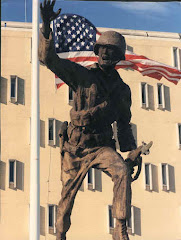
Here is the best collection on the web of workout programs designed specifically for the Army Physical Fitness Test (APFT) from the Notre Dame ROTC freshman class. Click the link then click on "View Published slideshow in a new window" you do not need to sign into google to view these powerpoints.
Push Up Programs:
100 Push Up Program Expl Info Brief
Upper Body Workout
PU SU Superset
Push Ups Training Program
Push Up Push Workout
Pushup Workout
Ab Programs:
Ranger Club Ab Workout
Ab Workout
60 Sit Up Program
Ab Workout 2
8 Part Ab Workout
Ab Workout to Increase APFT
Core Workout
Abs Workout
Core Workout 2
Run Programs:
Increase Your APFT Run Pace Program
Passing the APFT 2 Mile Run Program
Intense Run Workout
Max Sprint Workout
2 Mile Run
Achieving Your Ideal 2 Mile Run Time
Increase Run Time
2 Mile Time Workout







